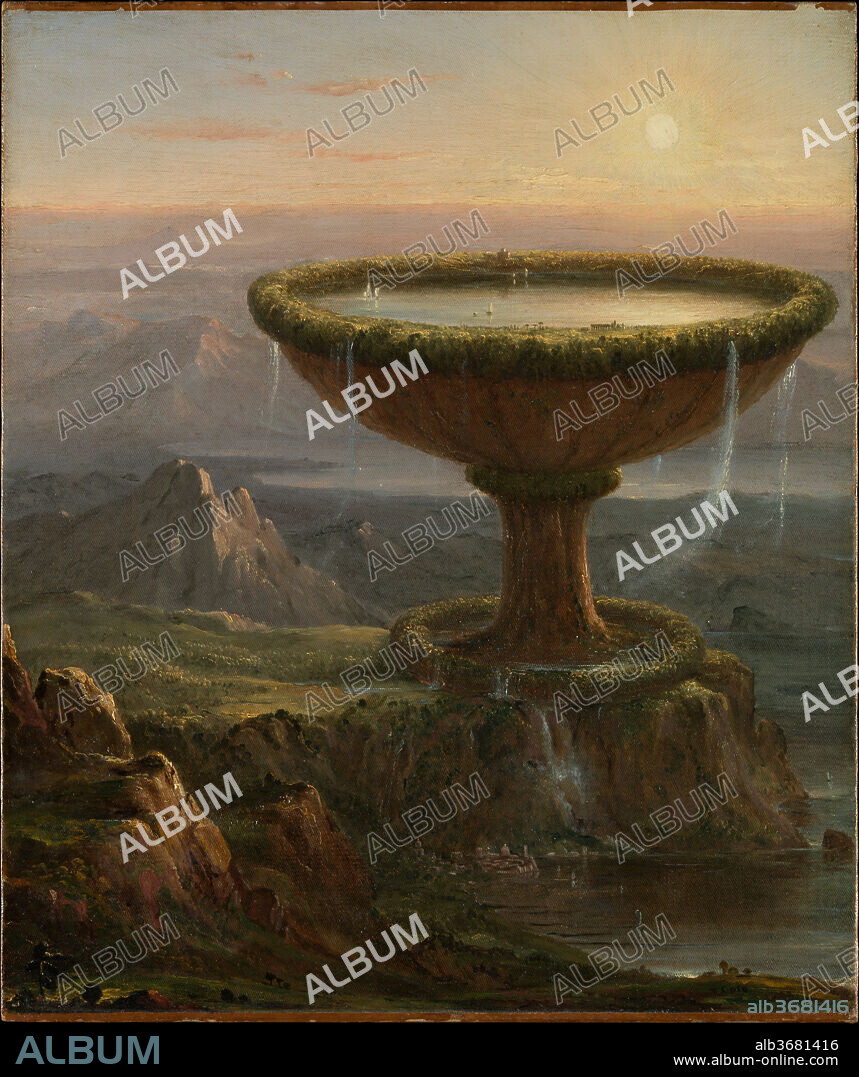alb3681416
THOMAS COLE. The Titan's Goblet

|
Ajouter à une autre Lightbox |
|
Ajouter à une autre Lightbox |



Avez-vous déjà un compte? S'identifier
Vous n'avez pas de compte ? S'inscrire
Acheter cette image.
Sélectionnez l'usage:

Auteur:
Titre:
The Titan's Goblet
Légende:
Voir la traduction automatique
The Titan's Goblet. Artist: Thomas Cole (American, Lancashire 1801-1848 Catskill, New York). Dimensions: 19 3/8 x 16 1/8 in. (49.2 x 41 cm). Date: 1833.
The culmination of Cole's romantic fantasies, this work echoes the artist's other works of the period in its Italian derived scenery and its attempt to illustrate themes dealing with the grandeur of the past, the passage of time, and the encroachment of nature. Rejected by Cole's patron, Luman Reed, and subsequently owned by the artist John M. Falconer, the work defies full explanation. The massive, vegetation encrusted goblet around whose rim are found classical ruins, and on whose glassy surface boats sail, has been linked to Norse legend and Greek mythology. Theophilus Stringfellow, Jr. described it as a self-contained, microcosmic human world in the midst of vast nature, while Falconer linked the monumental stem of the goblet to the trunk of the Norse world-tree; he likened the cup to "the ramifying branches . . . which spread out and hold between them an ocean dotted with sails, surrounded by dense forests and plains." Other theories tie the fantastic forms to J. M. W. Turner's "Ulysses Deriding Polyphemus" (National Gallery, London), to Italian architecture and geological formations, or to the golden goblet of the sun-god Helios. The elevation and remove of the cup, rimmed with classical remnants, suggests the disassociation of the present, embodied in the surrounding landscape, from the pinnacle of creation which nourished its culture. Cole serves as intermediary, a role open only to the artist or poet, transcending the strictues of the immediate world to unite past and present.
Technique/matériel:
HUILE SUR TOILE
Musée:
Metropolitan Museum of Art, New York, USA
Crédit:
Album / Metropolitan Museum of Art, NY
Autorisations:
Modèle: Non - Propriété: Non
Questions sur les droits?
Questions sur les droits?
Taille de l'image:
3443 x 4102 px | 40.4 MB
Taille d'impression:
29.2 x 34.7 cm | 11.5 x 13.7 in (300 dpi)
 Pinterest
Pinterest Twitter
Twitter Facebook
Facebook Copier le lien
Copier le lien Email
Email
